
Index
Applications & Benefits of GAO’s RFID, BLE, IoT & Drones for Oil and Gas Extraction
GAO Helps Customers Comply with Standards, Mandates & Regulation of Oil and Gas Extraction
GAO Software Provides Easy Integration with API
Case Studies of RFID, IoT & Drone Applications
GAO RFID Systems & Hardware for Oil and Gas Extraction
Overview
Oil and Gas Extraction, often referred to as the upstream sector of the oil and gas industry, is the process of locating, drilling, and producing hydrocarbons (oil and natural gas) from beneath the Earth’s surface.
GAO’s RFID, BLE, IoT, and drone technologies have helped its customers in the oil and gas extraction oil play an influential role in the global economy as the world’s primary fuel sources. The processes and systems involved in producing and distributing oil and gas are highly complex, capital-intensive, and require state-of-the-art technology. Oil and gas extraction companies may operate oil and gas wells based on their own initiatives or act as a service provider on a contract or fee basis.
Ranked as one of the top 10 global RFID suppliers, GAO RFID Inc. is based in New York City, U.S. and Toronto, Canada. GAO offers a comprehensive selection of UHF, HF (including NFC) and LF RFID (radio frequency identification) readers and tags, BLE (Low Energy Bluetooth) gateways and beacons, and various RFID and BLE systems such as people tracking, asset tracking, access control, parking control, fleet management, WIP (work in progress), traceability. Such RFID and BLE products and systems, as well as its IoT and drone technologies, have been successfully deployed for Oil and Gas Extraction. Its sister company, GAO Tek Inc. https://gaotek.com, is a leading supplier of industrial or commercial testers and analyzers, drones, and network products.
The targeted markets of both GAO RFID Inc. and GAO Tek Inc. are North America, particularly the U.S., Canada, Mexico, and Europe. As a result, this website gaorfid.com is offered in English and other major languages of North America and Europe such as Spanish, French, German, Italian, Polish, Ukrainian, Romanian, Russian, Dutch, Turkish, Greek, Hungarian, Swedish, Czech, Portuguese, Serbian, Bulgarian, Croatian, Danish, Finnish, Norwegian, Slovak, Catalan, Lithuanian, Bosnian, Galician, Slovene, Latvian, Estonian, Welsh, Icelandic, and Irish.
Applications & Benefits of GAO’s RFID, BLE, IoT & Drones for Oil and Gas Extraction
 To satisfy its customers, GAO’s RFID or RFID Systems for oil and gas extraction are offered in 2 versions. One version is that its software is running on a local server that normally is on our client’s premises, and another version runs in the cloud. The cloud server could be GAO’s cloud server, client’s own cloud server or a cloud server from one of the leading cloud server providers such as Amazon Web Services (AWS), Microsoft Azure, Google Cloud, IBM Cloud (formerly SoftLayer), Oracle Cloud, RedHat, Heroku, Digital Ocean, CloudFlare, Linode and Rackspace. The above illustrates GAO system for oil and gas extraction software running on a local server.
To satisfy its customers, GAO’s RFID or RFID Systems for oil and gas extraction are offered in 2 versions. One version is that its software is running on a local server that normally is on our client’s premises, and another version runs in the cloud. The cloud server could be GAO’s cloud server, client’s own cloud server or a cloud server from one of the leading cloud server providers such as Amazon Web Services (AWS), Microsoft Azure, Google Cloud, IBM Cloud (formerly SoftLayer), Oracle Cloud, RedHat, Heroku, Digital Ocean, CloudFlare, Linode and Rackspace. The above illustrates GAO system for oil and gas extraction software running on a local server.
 The above illustrates GAO system for oil and gas extraction with its software running in cloud.
The above illustrates GAO system for oil and gas extraction with its software running in cloud.
GAO’s RFID and BLE technologies, consisting of RFID readers, RFID tags, BLE gateways, BLE beacons, software, cloud services and their systems, have the following applications in oil and gas extraction:
- Asset Tracking and Management: GAO’S RFID tags can be affixed to critical equipment, tools, and assets, such as drilling machinery, pipelines, valves, and safety gear. RFID readers and BLE gateways enable real-time tracking and monitoring of these assets, facilitating efficient inventory management and maintenance scheduling.
- Personnel Safety: GAO’S RFID badges or BLE-enabled devices can be provided to workers in the field. These devices can be used for personnel tracking, ensuring that individuals are within designated safe zones, enhancing safety protocols, and enabling rapid response in emergencies.
- Inventory Control: GAO’S RFID technology automates inventory management by tracking the levels of essential supplies, spare parts, and chemicals required for oil and gas extraction. This minimizes downtime due to shortages and streamlines procurement processes.
- Tool and Equipment Security: GAO’S RFID tags on tools and equipment deter theft and unauthorized use. These tags also provide data on usage patterns and maintenance history, aiding in maintenance planning and cost control.
- Pipeline and Well Monitoring: GAO’S RFID and BLE technology can be applied to monitor the condition and performance of pipelines, wellheads, and related infrastructure. This includes tracking the integrity of components and identifying potential issues before they lead to failures or leaks.
- Access Control: GAO’S RFID badges or BLE-based access systems can control entry to restricted zones within oil and gas facilities, ensuring that only authorized personnel gain access to sensitive areas.
- Maintenance and Inspection Automation: GAO’S RFID tags and BLE beacons on equipment can automate maintenance alerts and inspection scheduling, aiding in preventive maintenance and reducing downtime.
- Logistics and Supply Chain Optimization: GAO’S RFID technology can streamline the logistics and supply chain operations by tracking the movement of materials, equipment, and products from suppliers to extraction sites, improving overall efficiency and reducing costs.
GAO’s drone technologies find the following applications in the oil and gas extraction:
- Facility and Asset Inspection: GAO’S drones equipped with high-resolution cameras and sensors can conduct aerial inspections of oil and gas facilities, pipelines, storage tanks, and other critical infrastructure. They provide visual data and infrared imaging to identify equipment corrosion, leaks, or structural damage, allowing for early maintenance interventions.
- Pipeline Monitoring: GAO’S drones can fly along extensive pipeline networks, inspecting them for physical damage, leaks, and signs of wear and tear. They help operators identify potential issues promptly, reducing the risk of environmental incidents and service interruptions.
- Environmental Monitoring: GAO’S drones equipped with sensors can monitor air and water quality in and around extraction sites. They detect emissions, spills, and other environmental concerns, aiding in compliance with
- Exploration and Surveying: GAO’S drones with advanced surveying capabilities can perform geological surveys and topographical mapping of remote and challenging terrain. This data assists in identifying suitable locations for drilling and exploration activities.
- Security and Surveillance: GAO’S drones enhance security by providing real-time surveillance of oil and gas facilities. They can detect and respond to unauthorized access, intrusions, or security breaches, improving site safety.
- Emergency Response: In the event of accidents or emergencies, GAO’S drones can quickly survey and assess the extent of damage or spills, providing critical information to response teams. This aids in efficient and informed decision-making during crisis situations.
- Flare Stack Inspections: GAO’S drones equipped with specialized cameras and sensors can inspect flare stacks and other elevated equipment. This reduces the need for personnel to work at dangerous heights and enhances safety.
- Remote Sensing and Data Collection: GAO’S drones can collect data from remote and challenging-to-reach areas, helping operators make informed decisions about resource allocation, infrastructure development, and maintenance scheduling.
GAO’s IoT technologies, consisting of IoT sensors, sensors networks and systems, find the following applications in the oil and gas extraction:
- Remote Monitoring and Control: GAO’s IoT sensors can be installed on various equipment and assets, including pumps, compressors, valves, and storage tanks. These sensors provide real-time data on equipment performance and conditions, enabling remote monitoring and control, predictive maintenance, and the ability to respond quickly to issues.
- Asset Integrity and Condition Monitoring: GAO’s IoT sensors are used to monitor the condition of critical assets, such as pipelines and wellheads. They detect factors like pressure, temperature, corrosion, and vibration, helping operators identify potential problems and schedule maintenance proactively.
- Leak Detection: GAO’s IoT sensors equipped with gas detectors and leak sensors can identify and report the presence of hydrocarbon leaks or emissions. Early detection of leaks is essential for safety, environmental compliance, and minimizing product loss.
- Environmental Compliance: GAO’s IoT sensors are employed to monitor emissions and air quality in and around extraction sites. They help operators adhere to environmental regulations and reduce the impact of operations on surrounding ecosystems.
- Security and Surveillance: GAO’s IoT sensors can be used for security purposes, such as perimeter monitoring and intrusion detection. They provide alerts and data to enhance site security and safety.
GAO Helps Customers Comply with Standards, Mandates & Regulation of Oil and Gas Extraction
GAO RFID Inc. has helped many companies in oil and gas extraction to deploy RFID, BLE, IoT and drone systems and to ensure such deployments complying with the applicable industry standards, mandates and government regulations:
RFID, BLE, IoT, & Drone Standards & Mandates
- ASTM F38 – Unmanned Aircraft Systems
- ISO 21384 – Unmanned aircraft systems
- FAA Part 107 – Small Unmanned Aircraft Regulations (U.S.)
- JARUS – Joint Authorities for Rulemaking on Unmanned Systems
- ANSI/CTA-2063 – Standard for Remote ID and Tracking
- ICAO Annex 2 – Rules of the Air (International Civil Aviation Organization)
- ISO 18000
- EPCglobal
- ISO 15693
- ISO 14443
- Bluetooth SIG Standards
- Bluetooth 4.0
- Bluetooth 5.0 and later
- IEEE 802.11
- MQTT (Message Queuing Telemetry Transport)
- CoAP (Constrained Application Protocol)
- OPC UA (Unified Architecture)
- Thread
US Government Regulations
- Federal Communications Commission (FCC) Regulations
- National Institute of Standards and Technology (NIST) Regulations
- S. Customs and Border Protection (CBP) Regulations
- Occupational Safety and Health Administration (OSHA) Regulations
- Environmental Protection Agency (EPA) Regulations
- National Electrical Code (NEC)
- National Telecommunications and Information Administration (NTIA) Regulations
- Department of Commerce Export Administration Regulations (EAR)
- Federal Acquisition Regulation (FAR) – for government contracts
Canadian Government Regulations
- Innovation, Science, and Economic Development Canada (ISED) Regulations
- Canadian Radio-television and Telecommunications Commission (CRTC) Regulations
- Industry Canada Regulations
- Canada Border Services Agency (CBSA) Regulations
- Health Canada Regulations (for radiofrequency emissions)
- Canadian Environmental Protection Act (CEPA) Regulations
- Canadian Standards Association (CSA) Standards
GAO Software Provides Easy Integration with API
GAO’s RFID and BLE software offers a free trial for both the server-based and cloud versions, and offers an API to the important systems in oil and gas extraction such as:
Personnel management:
- tracking employee attendance and timesheets
- ensuring that employees are properly trained and certified.
- Monitoring the location and movements of personnel on-site for safety and accountability.
- Optimizing work shifts and rotations to maintain continuous operations.
Equipment management:
- tracking the location and condition of equipment
- scheduling maintenance and repairs
- Automating maintenance alerts and scheduling for equipment to minimize downtime.
- Analyzing equipment usage data to improve efficiency and reduce idle time.
- Managing spare parts and consumables required for equipment maintenance.
- Operating and monitoring equipment remotely to reduce manual interventions and increase safety.
Access control:
- ensuring that only authorized personnel are present
- tracking the movement of people and materials on the site.
Warehouse management:
- tracking the inventory of materials and supplies
- ensuring that materials are properly stored and protected ordering new materials as needed
Supply chain management:
- managing the flow of materials and information from suppliers to the construction site
- ensuring that materials are delivered on time and in the right quantities
- tracking the costs of materials.
Other applications:
- planning and scheduling the construction project
- managing the budget
- ensuring that the project is completed on time and within budget.
- identifying and assessing risks to the project
- developing mitigation strategies
- monitoring the risks throughout the project.
- ensuring that the project complies with environmental regulations managing waste
GAO has enabled its customers to make use of some of the leading software and cloud services in oil and gas extraction. Below are some of the popular software and cloud services in oil and gas extraction.
SAP SuccessFactors, Workday HCM, Oracle Human Capital Management, ADP Workforce Now, and Kronos Workforce Central. For equipment management, notable options are IBM Maximo, Infor EAM, Oracle Enterprise Asset Management, Fiix (formerly Maintenance Assistant), and eMaint CMMS. Access control solutions encompass LenelS2 OnGuard, Honeywell Access Control, HID Global’s Access Control, Genetec Security Center, and Avigilon Access Control Manager. In the realm of warehouse management, top choices consist of Manhattan Associates Warehouse Management, HighJump Warehouse Management System (WMS), Oracle Warehouse Management Cloud, JDA Warehouse Management, and Blue Yonder (formerly JDA) Warehouse Management. In supply chain management, SAP Integrated Business Planning (IBP), Oracle Supply Chain Management Cloud, Kinaxis RapidResponse, Infor Nexus Supply Chain Management, and Blue Yonder.
GAO has worked with some of the leading technology companies’ oil and gas extraction to provide integrated RFID, BLE, IoT and drone solutions to customers. Here are some of the technology leaders in oil and gas extraction.
Schlumberger, Halliburton , Baker Hughes, Schneider Electric, Emerson Electric, Siemens, IBM, Oracle, AVEVA Group.
Case Studies of RFID, IoT & Drone Applications
Case Studies of RFID Applications
Below are some RFID application cases in oil and gas extraction.
In a major U.S. oil and gas extraction plant, GAO’S RFID technology was implemented to optimize inventory management. RFID tags were used to track the movement of components and equipment throughout the production process, resulting in a 20% reduction in inventory carrying costs and a 15% increase in production efficiency.
A Canadian oil and gas extraction plant, integrated GAO’S RFID for quality control purposes. RFID tags were attached to individual products, allowing for real-time monitoring of production parameters and quality checks. This system helped reduce defects by 18% and improved overall product quality.
In Mexico, a gas plant deployed RFID to enhance its supply chain efficiency. GAO’S RFID-enabled containers and pallets were used to track the movement of materials between manufacturing facilities and distribution centers. This initiative reduced transit times by 25% and improved overall supply chain visibility.
A leading European Oil and Gas plant adopted GAO’S RFID for asset tracking across multiple facilities. RFID tags were attached to valuable equipment, ensuring their accurate location and status. This implementation reduced equipment loss and improved asset utilization rates.
Many applications of RFID by GAO can be found here
RFID Solutions for Mining and Oil Gas Extraction Industries | GAO RFID
Case Studies of IoT Applications
Below are some IoT application cases in oil and gas extraction.
In USA, IoT to monitor the condition of its infrastructure, such as bridges and piers, to collect data on oil flow patterns and other environmental condition, to track the condition of its wastage and bridges
In Canada, IoT used to monitor the condition of its water pipes, to monitor the condition of its oil and gas pipelines, to identify potential problems early on and prevent derailments.
In Mexico, IoT used to monitor the condition of its roads and bridges, to monitor the condition of its oil and gas pipelines, to monitor the condition of its runways and other airport infrastructure.
In Europe, IoT is used to monitor the condition of its bridges and other infrastructure, to monitor the condition of its usage and other assets, to monitor the condition of its trackside equipment of gas plant and other assets.
Case Studies of Drone Applications
Below are some drone application cases in oil and gas extraction.
Prominent U.S Drones are used to inspect oil and gas facilities, including drilling rigs, wellheads, pipelines, and storage tanks. Equipped with high-resolution cameras and sensors, drones can perform visual inspections, identify equipment issues, and assess the structural integrity of critical infrastructure. This helps operators proactively address maintenance needs and reduce the risk of accidents.
In Canada, Drones are deployed for monitoring extensive pipeline networks that crisscross remote and challenging terrains in Canada. They help detect leaks, assess pipeline integrity, and identify areas requiring maintenance or repair. This proactive approach reduces the risk of environmental incidents and ensures compliance with safety regulations.
In Mexican Drones play a crucial role in geological surveys and topographical mapping of exploration sites. They provide accurate geospatial data, aiding in site selection, resource assessment, and minimizing the environmental impact of exploration activities.
A leading European Drones are instrumental in environmental monitoring and compliance. They collect data on emissions, air and water quality, and wildlife activity near extraction sites. This information assists companies in adhering to strict European environmental regulations and minimizing their ecological impact.
GAO RFID Systems & Hardware for Oil and Gas Extraction
GAO RFID Inc. offers the largest selection of BLE gateways, BLE beacons, RFID readers, tags, antenna, printers, and integrated RFID systems for various industries, including oil and gas extraction.
BLE (Bluetooth Low Energy)
GAO offers advanced BLE gateways:
as well as versatile beacons with such important functions as temperature, humility, vibration and panic button:
GAO’s BLE technology is suitable for many industries, including oil and gas extraction.
UHF (Ultra High Frequency) RFID
GAO offers the largest selection of UHF RFID readers for various industries, including oil and gas extraction:
GAO RFID offers the widest choice of UHF RFID tags, labels, badges, wristbands for various industries, including oil and gas extraction:
and an array of antennas to address different applications:
HF (High Frequency), NFC (Near Field Communications) and LF (Low Frequency) RFID
GAO offers the largest selection of HF, NFC, and LF RFID readers for various industries, including oil and gas extraction:
HF, NFC and LF RFID tags, labels, badges, wristbands for various industries, including oil and gas extraction:
and antennas:
GAO also offers RFID printers:
Digital I/O adapters:
and relay controllers:
For embedded applications, GAO offers UHF, HF and LF RFID reader modules:
- UHF 860 – 960 MHz RFID Modules
- 13.56 MHz High Frequency RFID Modules
- 125 kHz Low Frequency RFID Modules
In collaboration with its sister company GAO Tek Inc, a wide selection of high-quality drones is offered:
The RFID systems by GAO are highly popular for clients in oil and gas extraction:
Physical asset or operational equipment tracking system:
Assets that can be effectively tracked using GAO’s technologies include storage tanks and containers, chemical pumps and transfer equipment, forklifts and pallet jacks, safety equipment (e.g., protective clothing, gloves, respirators), labeling and packaging machinery, quality control and testing equipment, computer systems for inventory management, transportation vehicles (e.g., trucks, tankers), climate-controlled storage warehouses, and specialized handling equipment for hazardous materials.
People or workers tracking system:
Personnel or people access control system:
Parking or vehicle control system:
Furthermore, GAO provides the customization of RFID tags, RFID readers, BLE beacons and BLE gateways, IoT, drones, and systems and consulting services for oil and gas extraction and for various industries in all metropolitans in North America, particularly the U.S., Canada and Mexico, and Europe:
GAO Makes Efforts to Satisfy Customers
Large Choice of Products
In order to satisfy the diversified needs of their corporate customers, GAO RFID Inc. and its sister company GAO Tek Inc. together offer a wide choice of RFID, BLE, IoT, drones, testing and measurement devices, and network products.
Overnight Delivery
In order to shorten the delivery to our customers, GAO has maintained a large stock of its products and is able to ship overnight within continental U.S. and Canada, and fast delivery to anywhere in Mexico and Europe from the nearest warehouse.
Local to Our Customers
We are located in both the U.S. and Canada. We travel to customers’ premises if necessary. Hence, we provide a very strong local support to our customers in North America, particularly the U.S., Canada and Mexico, and Europe. Furthermore, we have built partnerships with some integrators, consulting firms and other service providers in different cities to further strengthen our services. Here are some of the service providers in oil and gas extraction we have worked with to serve our joint customers:
- Rockwell Automation
- ABB
- Schneider Electric
- Honeywell
- Siemens Microsoft
- SAP
- Infor
- Oracle
- Blue Yonder
- Emerson
- Yokogawa
- Endress+Hauser
- CH2M Hill
- Jacobs Engineering
- AETOS
- Intergraph
- Bentley Systems
GAO Has Served Oil and Gas Extraction Extensively
GAO RFID Inc. and its sister company GAO Tek Inc. together offer a wide choice of RFID, BLE, IoT, drone, testing and measurement devices, and network products.
GAO’s products and technologies have helped its customers in oil and gas extraction to achieve success in Sustainability, drones, AR, VR, BIM, IoT, 3D printing, robots, big data
GAO RFID Inc. has deployed RFID, BLE and IoT projects for many companies in Oil and Gas Extraction, including many in its various divisions such as:
- Upstream: This division primarily focuses on exploration and production activities, including the discovery of new oil and gas reserves, drilling operations, and well completion. It involves activities such as drilling exploration wells, drilling development wells, and extracting hydrocarbons from reservoirs.
- Midstream: The midstream division is responsible for the transportation and storage of crude oil and natural gas from production facilities to processing plants or distribution points. This includes pipeline transportation, trucking, and storage in tanks or underground reservoirs.
- Downstream: Downstream operations involve the processing, refining, and distribution of oil and gas products. This division includes activities such as refining crude oil into various petroleum products (e.g., gasoline, diesel, jet fuel), petrochemical manufacturing, and the distribution and marketing of refined products.
- Oilfield Services: Oilfield services companies provide a wide range of support services to the upstream sector. This includes drilling services, well maintenance, equipment rental, and various technical services to help optimize oil and gas production.
- Exploration and Production (E&P): This division encompasses companies primarily engaged in the exploration and production of oil and gas resources. E&P companies identify potential reserves, drill wells, and operate production facilities.
- Drilling and Well Services: Companies in this division specialize in drilling operations, well construction, and well maintenance. They provide drilling rigs, equipment, and expertise to bring hydrocarbons to the surface.
- Oilfield Equipment and Technology: This sub-industry focuses on the manufacturing and supply of equipment and technologies used in oil and gas extraction. This includes drilling equipment, pumps, valves, sensors, and control systems.
- Natural Gas Processing and Distribution: Companies in this division focus on the processing of natural gas to remove impurities and extract valuable byproducts like natural gas liquids (NGLs). They also manage the distribution of natural gas to end users.
- Oil and Gas Refining: Refining companies are responsible for processing crude oil into various refined products, including gasoline, diesel, and chemicals. They operate large-scale refining facilities.
GAO’s technologies enable its customers in oil and gas extraction to effectively track their workforces such as sales representatives, product specialists, warehouse managers, logistics coordinators, chemical engineers, safety officers, quality control analysts, procurement specialists, inventory managers, customer service representatives, compliance officers, and supply chain managers effectively track operational assets such as storage tanks, chemical pumps, drum handling equipment, forklifts, pallet jacks, labeling machines, packaging machinery, conveyor systems, quality control and testing equipment, temperature and humidity sensors, RFID systems, inventory management software, safety showers and eyewash stations, hazmat storage cabinets, spill containment pallets, and transportation vehicles such as trucks and tankers.
Here are some of the leading companies in oil and gas extraction GAO has served:
- ExxonMobil
- Royal Dutch Shell
- Chevron Corporation
- BP (British Petroleum)
- Total Energies
- ConocoPhillips
- Equinor (formerly Statoil)
- Occidental Petroleum
- PetroChina
- CNOOC (China National Offshore Oil Corporation
- Saudi Aramco
- Petrobras
- Rosneft
- Kuwait Petroleum Corporation (KPC)
- Suncor Energy
- Devon Energy
- Pioneer Natural Resources
- Anadarko Petroleum Corporation
- EOG Resources
- Apache Corporation
- Hess Corporation
- Cenovus Energy
- Canadian Natural Resources Limited
- Marathon Oil




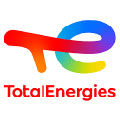

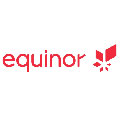


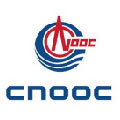

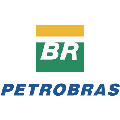
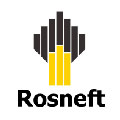
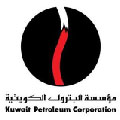










You Are Invited to Contact Us!
If you are interested in our products, services or partnering with us, please feel free to contact us by filling out this form:
or email us at sales@gaorfid.com
